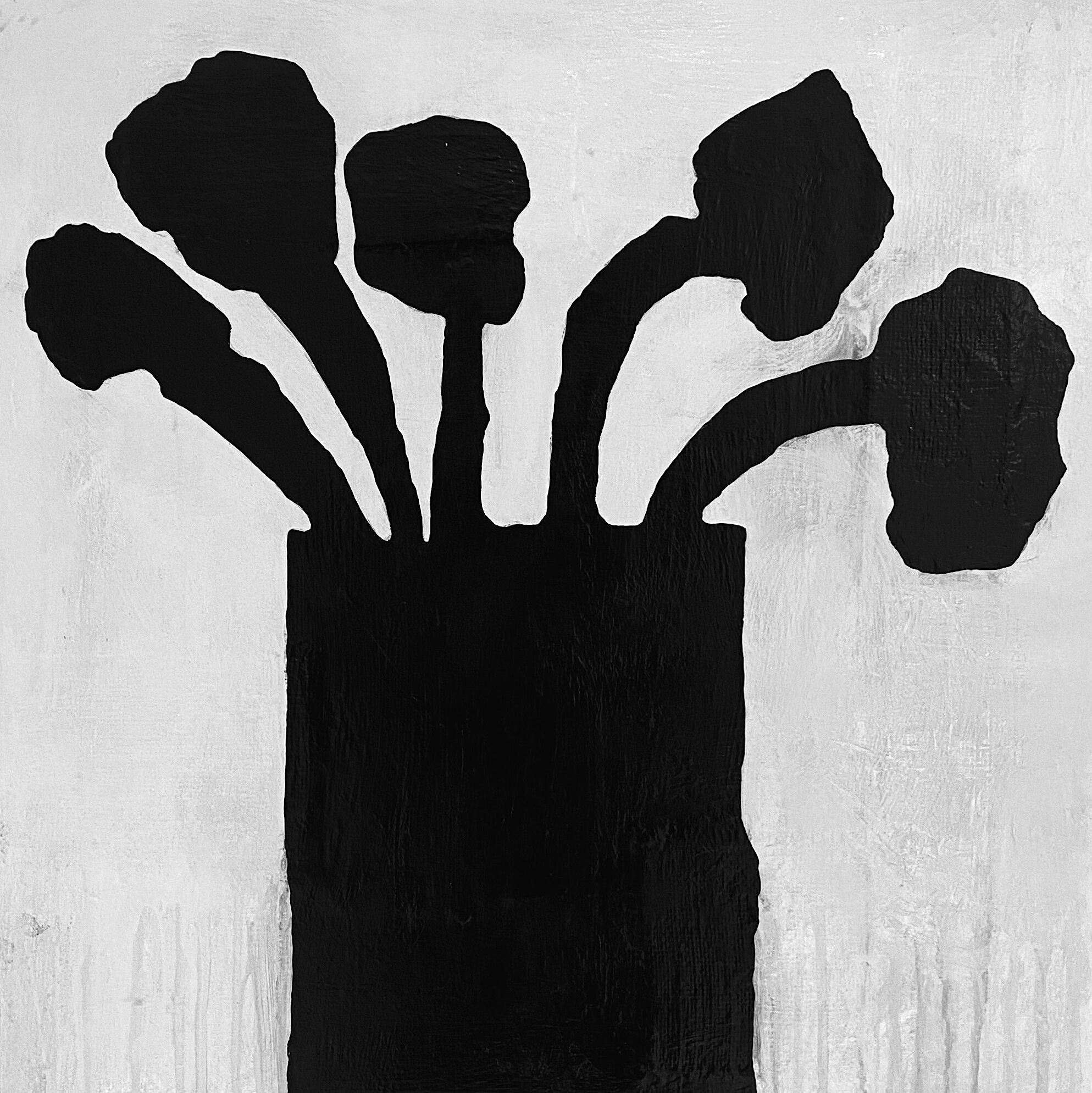
2021 DONALD BAECHLER
Donald Baechler made his first Black Flowers paintings in the mid-1980s, and he has returned to the series several times over the course of his career, allowing it to evolve organically as his practice has evolved. Initially drawn to silhouette-making because it was an art practice he could maintain in the midst of a hectic travel schedule, Baechler discovered that such pared-down forms on image-free backgrounds provided a mental and visual reprieve from his image-saturated, full-color works. “I recognized years ago that sometimes I want to fill the canvas up with imagery, and sometimes I want to empty it out,” he explains. “They are not competing impulses, but necessary counterpoints.” The Black Flowers represent Baechler at his most austere and restrained.
Since 2003, Baechler has been making three-dimensional versions of the Black Flowers in cast bronze, which has made him attentive to sculptural considerations, such as weight, mass, and balance. “Recently I find myself plotting Black Flowers compositions with the bronze foundry on my mind,” he says. Consequently, his painted flowers have taken on a sturdier character. In contrast to the fragility and ephemerality of their subject matter, Baechler’s recent paintings suggest strength, architectonic stability, and permanence.
Baechler modeled some of his early Black Flowers on found images, which he would edit and alter. Inspired by Art brut, Baechler continually works to free himself from stylistic conventions by seeking out and emulating drawings made by people not formally trained in art, cultivating what the art critic Carter Ratcliff once called a “knowing awkwardness” or “deliberate clunkiness” in his shapes and lines. While this practice remains important for Baechler, he has gradually become less reliant on found images as a starting point. For his newest iterations of the motif, Baechler has worked almost exclusively from observation, setting up still-lifes of artificial flowers and dried branches in his studio or photographing real flowers in silhouette against his window, then translating those forms into his own idiosyncratic visual language. Whether working from existing images or from direct observation, though, his goal remains constant. As he states: “I am always looking for ways to reinvent the familiar.” The new works mark a significant milestone on his decades-long journey of continuous reinvention.